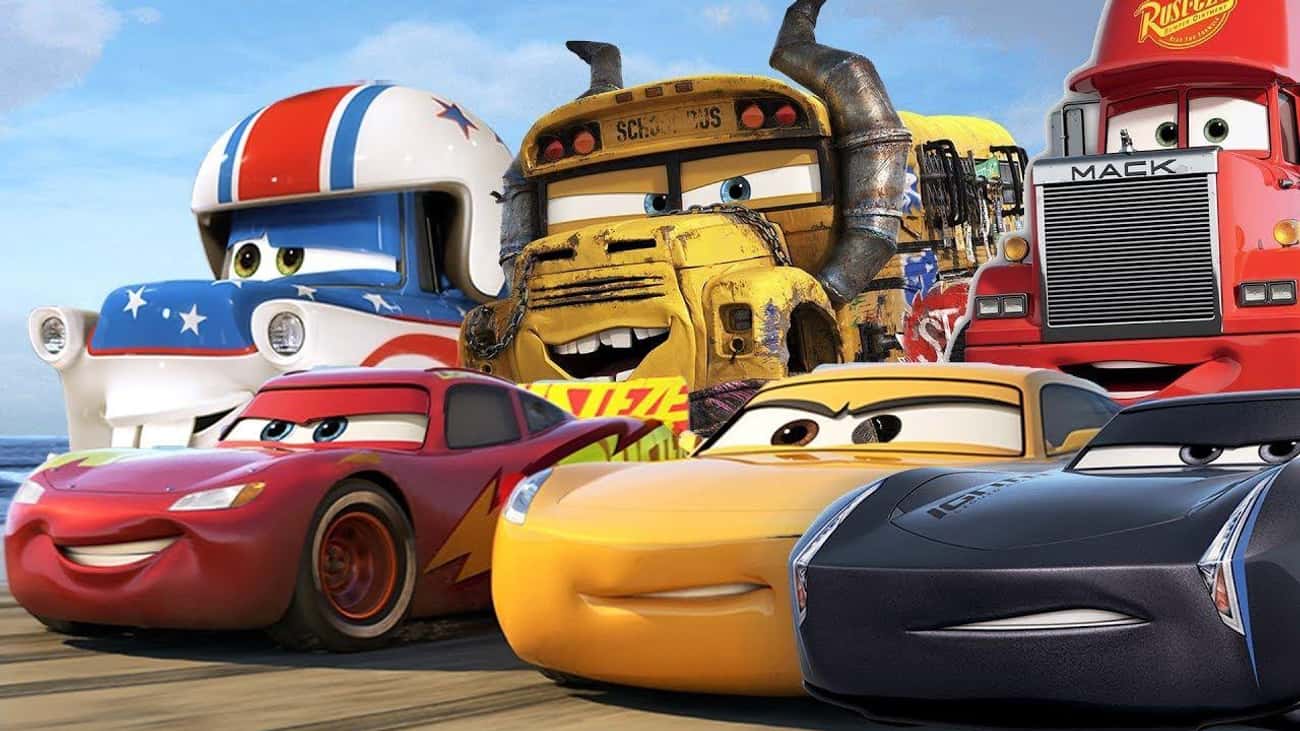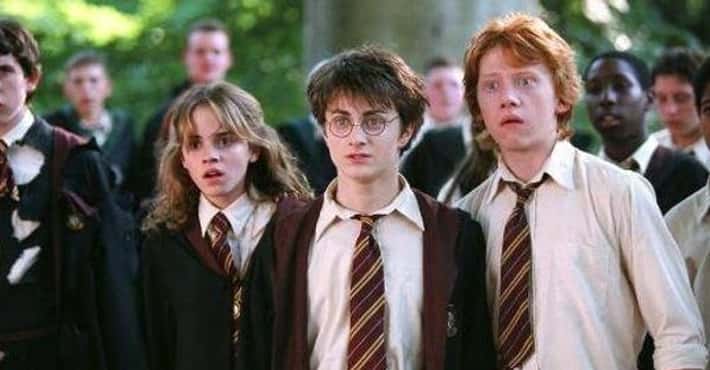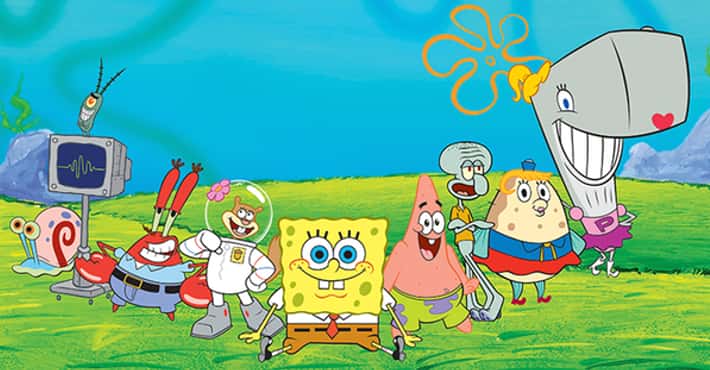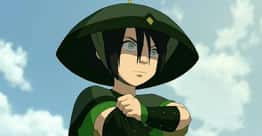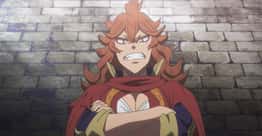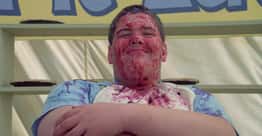
Fascinatingly Complex Fan Theories About The ‘Cars’ Universe
Copy link
- 1420 VOTES
The Cars Have Organized Religion
While it's easy to get wrapped up in the anthropomorphising of the cars and accept their human qualities - like Fillmore the VW Bus acting like a stoned hippy, implying there are car drugs - some of these funny world building moments suggest some truly bizarre aspects and implications for the society in Cars.
Namely, as pointed out by Redditor u/Jru247, Cars 2 raises serious questions about the presence of organized religion among the sentient vehicles: "In Cars 2 we see the popemobile. There's a car papacy? Is there Cartholocism? Was there a St. Peter car, or a Jesus Chrysler? Are there other religions?"
Tumblr user calumnw goes further, pointing out the ramifications of this throw-away joke: "The pope is a car in a pope hat. He rides around in a Popemobile. A CAR is riding in another car. they make reference to the Popemobile. 'Is the Popemobile Catholic?'... presumably this means the Popemobile is employed and must be specifically Catholic in order to be the chauffeur and carrier to the regular pope. Also, Catholicism is in this universe! This means that there must have been an actual Jesus Christ car."
- 2622 VOTES
Sally Tried To Take Her Own Life Before Ending Up In Radiator Springs
Sally - a 2002 Porsche 911 Carrera and small-town lawyer - came to Radiator Springs after leaving her old life as a high-powered litigator in Los Angeles behind her. According to a featurette on the Cars Blu-ray, "Sally grew tired of her life in the fast lane… and made a new start in the small town of Radiator Springs." The official Blu-ray extras also state, "Sally's tattoo pinstriping is left over from her early days. Though she's a little embarrassed by it now, it serves as a reminder of her high-speed life in California and how happy she is to be cruising in the slow lane."
However, what if she didn't actually intend to live in Radiator Springs at all? What if she became so overwhelmed or disillusioned with her "high-speed life" that she simply intended to drive off into some remote area and end it all? Redditor u/SolidBones thinks there's quite a bit of low-key evidence to suggest Sally ended up in the rural Route 66 town after she attempted to take her life.
When Lightning drives off with Sally to the [Wheel Well Motel], he asks her how a (likely rich) city Porsche ended up in nowheresville. She responds that she did indeed have a lavish life, "but [she] wasn't...happy,' with a far off look. This is a common sign of depression - not being able to find happiness even in situations where most others do. Then she says she drove away from home into the desert until she 'broke down.' Not ran out of gas, broke down. We know that cars [perish] in this universe, and I would suspect breaking down and crashing are the only ways that happens.
"Then she talks about how Mater found her and towed her back. She didn't call for a tow or anything - she was found, broken down, alone in the desert, driving away from her life without a destination… She's in love with the town because they saved her. She's 'one of them' because a bunch of older cars found a young car in distress and adopted her."
- 3379 VOTES
Their Doors Can’t Open Because Their Innards Would Fall Out
Photo: Cars Toon: Mater's Tall Tales / Disney ChannelIf you lived in a nice, pleasant fantasy world where you figured the cars in Cars were just sentient, magically animated motor vehicles, it seems that you might be in for a rude awakening. These aren't normal cars with windshield eyes, but rather quasi-biological entities filled with meaty internal organs. Which, according to Pixar animators and internal memos, is why you never see them open their doors or windows.
In a featurette released by Pixar, narrated by one of the film's design animators, they had a hard time figuring out how to animate one moment in the script in which Lightning McQueen is supposed to show another character a map. It proved tricky to determine how to show this action, since Lightning McQueen had no hands. In the video, the designer says outright, "He can't open his doors, because that's where his brains are." This is accompanied by a cute sketch of the vehicular protagonist with his door open, and a giant brain in what would essentially be the driver's seat.
Additionally, Jay Ward, the creative director for the Cars franchise, said that, in his mind - although not necessary in Pixar canon - this is absolutely how the cars' anatomy works. Ward told Screen Crush, "You’ll never see the doors open. Because the brain and the eyes are in there, we don’t want anything falling out of the side."
In an effort to illustrate this point, acclaimed artist Jake Parker literally illustrated anatomical cross-sections of Lightning McQueen and Mater. The brilliantly crafted and deeply disturbing diagrams show the characters' "major internal structures," such as their tongues, vital organs, brains and skeletons.
- 4265 VOTES
'Cars' Exists In A Different Universe Than The Rest Of Pixar’s Films
One of the most celebrated film fan theories of all time is Jon Negroni Pixar Theory, which attempts to place all of the Pixar movies into one long logical timeline in a shared universe. In Negroni's theory, humans evacuate the Earth in 2100 due to horrifying pollution (as seen in the backstory of WALL-E), leaving cars behind. Those cars come to life, in the Cars films, and then eventually pass on as well. The timeline picks up with a WALL-E unit cleaning the polluted Earth in 2800.
However, Redditor u/RogueVader1996 has their own theory that calls the acclaimed Pixar Theory into question. Namely, they argue the Cars films couldn't possibly fit into that timeline because, in those films, the planet isn't ravaged by pollution.
If [Cars] takes place in the 700 years after Operation Cleanup, why is Earth looking so nice and clean? Where are the deactivated WALL-E units, where are the incinerators, where is the massive air pollution, heck, WHERE IS THE TRASH? The planet we see in the Cars movies looks perfectly capable of supporting human life. Also, if this is the same Earth as the one where EVE probes are coming for annual reconnaissance, they should be coming back positive every time!
We know that in 2110 the B&L CEO declared the planet uninhabitable, and this must have been way before the first Cars movie. Are you telling me that after 2110, Earth became clean enough again to look like the way we see it in the Cars movies, and then went back to being all polluted to what we see in WALL-E all in just 700 years?... if this were true, that means the trash we see in WALL-E is actually left behind by the cars after they died out, but that’s obviously not true. The trash we see in WALL-E is clearly human.
- 5349 VOTES
The Cars Adopted The Personalities Of Their Former Human Masters
In the Cars films, all the vehicles have very human, very specific personalities. For example, Mater is a proud hillbilly tow truck, Doc Hudson is a stoic, older roadster, Lightning McQueen is an arrogant showboat race car, Sarge is a military vet, Luigi is a questionable Italian stereotype/high-end tire salesman. But how exactly did all these cars develop such human personas, or personalities whatsoever?
Well, Jay Ward, the creative director for the Cars franchise and the man who wrote the rules for the internal logic of the film's expansive universe, has a possible explanation. Ward spoke with Screen Crush and said that, in his mind (although not necessarily in official Pixar canon), the Cars slowly became autonomous and eventually overthrew humanity after realizing they didn't need people - which is why there are no people in the films. However, Ward suggests that remnants of the humans remain, explaining, "[Each] car takes on the personality of the last person who drove it."
Screen Crush's Matt Singer expanded on the implications of Ward's idea, writing, "That would explain why some of the vehicles talk like (and are even named after) famous racers like Mario Andretti and celebrities like Jay Leno." Because the cars belonged to them before eventually slaying them and taking over their personas.
- 6396 VOTES
'Cars 2' Never Happened
Some fans seem to think that the creators of Cars 3 essentially erased Cars 2 within the universe of the franchise.
According to Redditor u/Gravitysilence, based on the trailer for Cars 3 and in-film evidence, it seems that Cars 3 was meant to be a hard reboot so-to-speak, that was meant to ignore the fact that Cars 2 ever happened - just like how the 2018 Halloween film was meant to be a direct sequel to the 1978 original.
In one of the trailers of Cars 3, we can hear Smokey speaking over the scene of McQueen crashing. Smokey says, "You can't turn back the clock, but you can wind it up again." The phrase was chosen intentionally by Pixar to let us know that Cars 3 was made as a franchise reset.
This can be backed up by the lack of anything from Cars 2 having effect on Cars 3. The events of Cars 2 are never mentioned in Cars 3, and lessons learned in Cars 2 now have to be relearned. Pixar probably wants to forget about the second movie and so has made Cars 3 with only the first movie's plot in mind.
- 7253 VOTES
When Cars Became Sentient, They Overthrew Humanity
One of the most popular theories about the Cars universe - shared by many, many different fans - suggests that film takes place in our world, after humanity has already ended or otherwise removed from the planet before the cars gained sentience and somehow began to evolve over multiple generations. There are so many indicators the cars inhabit our Earth, from famous monuments to the American flag, to the fact that every vehicle speaks human languages.
As Screen Crush's Matt Singer points out, "It may be a planet of cars, but like the Planet of the Apes, it is definitely Earth, or at least it was in the past. The cars speak English, and their map is littered with recognizable landmarks, from Route 66 to Hollywood… Based on the evidence onscreen, the cars have not built a vaguely human society: The cars have taken over human society."
Surprisingly, this theory has been unofficially, non-canonically confirmed by one of the people instrumental in the development of the films. Jay Ward, the creative director for the Cars franchise and author of the unreleased internal world-building memo "The World of Cars Owner’s Manual," told Screen Crush this was essentially true - although he stresses that this is his opinion, and not necessarily Pixar's official take on the matter.
"If you think about this, we have autonomous car technology coming in right now. It’s getting to the point where you can sit back in the car and it drives itself," Ward said. "Imagine in the near-future when the cars keep getting smarter and smarter and after one day they just go, 'Why do we need human beings anymore? They’re just slowing us down. It’s just extra weight, let’s get rid of them.'"
- 8421 VOTES
The Cars Are Really Andy’s Toys, And He Imagined The Whole Franchise
Photo: Toy Story / Buena Vista Pictures DistributionThere sure are plenty of logical inconsistencies within the Cars universe. What happened to all the people? Why do they eat food? Why do they have all those wacky accents? However, these oversights would be perfectly reasonable if, say, the whole series took place in the mind of a child - specifically, Andy Davis, the toy-loving little boy from Pixar's Toy Story franchise.
As Redditor u/Ga14xyDefender suggests, "What if the cars in Cars are actually toys, and the world in which they live is young Andy's imagination? From my experience, when children are playing with toy cars, they don't [imagine] human characters, and sometimes make the cars talk to each other. Toy cars are normally based on real cars, and therefore have door handles, which would explain why the cars in Cars have door handles for use by humans even though there are no humans."
"Almost every young boy has toy cars, so it's completely plausible that Andy played with toy cars within one of his cardboard worlds, and the Cars films are what he's seeing in his head," the theory adds. "The racing and spy elements of the films do look like situations that a young boy could conjure up in his imagination."
- 9256 VOTES
The 'Cars' Films Take Place In The Same Universe As 'The Brave Little Toaster'
It's always fun to connect different film franchises into one shared universe. While the argument has been made that Cars might actually be a prequel to Transformers, some fans think it might actually be a sequel to The Brave Little Toaster, set in the distant future of that nightmarish animated movie's timeline.
Tumblr user theheightstuff suggests that "these two films are part of the same continuity. The Brave Little Toaster takes place in the 1980s, while the Cars franchise takes place sometime in a post-human future." Furthermore, they point out that living cars also exist in The Brave Little Toaster, "as seen in the (horrifying but catchy) musical number 'Worthless.'"
"The obvious difference is the placement of the eyes," theheightstuff says, explaining how the cars in The Brave Little Toaster have eyes for headlights, but "in Cars, the characters’ eyes are placed in the windshield. Until Cars 2 and a quick scene with Celine Dephare! Celine looks like the cars from Brave Little Toaster and we can see that she does, in fact, have the inner workings of a common car suited for a human driver, even though there are no humans in the Cars universe! At some point in this timeline, something has [taken out] all the humans. The anthropomorphic magic that brings our appliances to life when we aren’t looking continues, however, and a new society builds up around cars, the new dominant life form."
- 10229 VOTES
The Cars Are A Biomechanical Future Step In Human Evolution
Some who don't want to think about the lovable characters from the Cars universe annihilating all human beings sometimes like to argue that the cars simply live in a parallel universe filled with sentient machines that just so happens to resemble and reflect our world. However, some have poked some very specific holes in this pleasant fantasy: If humans never existed in the Cars universe, why do the cars have door handles? If they don't have drivers, who benefits from their side-view mirrors? Why have doors and windows at all? Jalopnik's Jason Torchinsky has what he calls a "horrific, disturbing theory," to explain it.
"Perhaps the Cars universe isn’t a different universe at all - perhaps it is our own universe, tens of thousands of years in the future, and perhaps humans are not gone - just very, very different," Torchinsky explains, before elaborating on what he calls his "Homunculus Theory," which suggests, "The humans are the cars."
"More specifically, there actually are human beings inside the cars, and are the source of the car’s personality, intelligence, everything. The mechanical car is just the external body of these human-derived creatures," Torchinsky adds. However, unlike another fan theory that posits that humans are living life inside the cars as if the vehicles were self-sufficient apartments, the Homunculus Theory suggests that humans are inexorably integrated into the very structure of the vehicle itself.
"Eventually, cybernetic interfaces between humans and cars were developed, setting the path of human/automotive evolution down a whole new path," Torchinsky explains. "Eventually, automated, robotic factories to produce cars were built, and human babies were produced in amniotic vats, and then directly embedded within an automotive exoskeleton/body… This is why all the cars in Cars are fundamentally human in personality, culture, and intelligence: inside, they are human. [There is] a genetically-engineered, stunted, freakishly emaciated-looking human inside every car in the Cars universe."
- 11259 VOTES
The Cars Actually Have People Living Inside Them
While many fans have adopted the various theories about why the Cars films appear to take place in a world devoid of human life, at least one fan hypothesized that humans do, in fact, exist in the world. We just can't see them because they fully live inside of the cars themselves - as if they were small, mobile apartments - and that the cars aren't actually alive but are rather just very advanced machines.
"Instead of being a world dominated by cars, Cars is actually set in a world in which technology had advanced to the point where humans can just live in their cars. Assuming they have some way of creating food and water in there (maybe they have replicators?) there would be no reason for them to ever leave," Redditor u/Cheeseanonioncrisps suggests. "Because all interactions would happen between two people in cars, car manufacturers started adding 'mouths' (speakers) and 'eyes' (cameras) to improve the experience and make them seem more human."
Additionally, this would imply that "in the Cars universe, what car you have decides your job." Which means that "all the lorries, tractors and other cars with this problem are just from poor families who couldn't afford anything better whereas Lightning McQueen was probably born with a silver spoon in his mouth."
- 12238 VOTES
The Cars Aren’t Cars At All But Are Really Insects
In the Cars universe, humans don't exist - that's just generally accepted. If you look at the famous Jon Negroni Pixar Theory, which states that all Pixar movies share the same universe, it's argued that the Cars films take place after the human exodus that we see in WALL-E. However, The Film Theorists' MatPat adds onto that theory suggesting that the cars in Cars are actually "a highly evolved form of insect."
"It sounds ridiculous, but think about it! Just like an insect has a hard exoskeleton made of chitin, the creatures in the Cars universe have evolved a stronger exoskeleton made of various metals," MatPat explains. "An insect's exoskeleton isn't a single surface, but rather consists of multiple jointed plates, so that when an insect moves a muscle, it causes the connected exoskeleton plate pieces to move as well. It's the same style of movement that we see in the cars."
As further evidence, MatPat points to the fact that the cars appear to be organic - as they eat food and get the hiccups, among other things that would require a non-mechanical biology - as well as the fact that they can straight-up grow dragonfly-like wings and flitter around as actual insects. Just look at the Vroomaroundus Bugus, a literal VW beetle that is "usually indigenous to warm dry climates," and has a "relatively short life span," according to supplementary material on the Cars Blu-ray.
- 13247 VOTES
'Cars' Is Part Of The 'Transformers' Universe
When you look at Lightning McQueen and Doc Hudson - or the various other forms of living vehicles in the Cars universe, including semi-trucks and tractors - it's not hard to picture them as being made of living metal. They appear to exist as sentient mechanical beings on a planet with no humans. According to one fan, there could be a very good explanation.
"I thought about it a lot, and I realize that they are [a] non-organic life form. I thought I heard [that] term before, and I did, in a TRANSFOMERS MOVIE," Redditor u/lan078 theorizes. "So I started to think, the planet in which the Cars franchise takes place is Cybertron thousands of years before the civil war between the Autobots and Decepticons… Cars is a prequel to Transformers."








